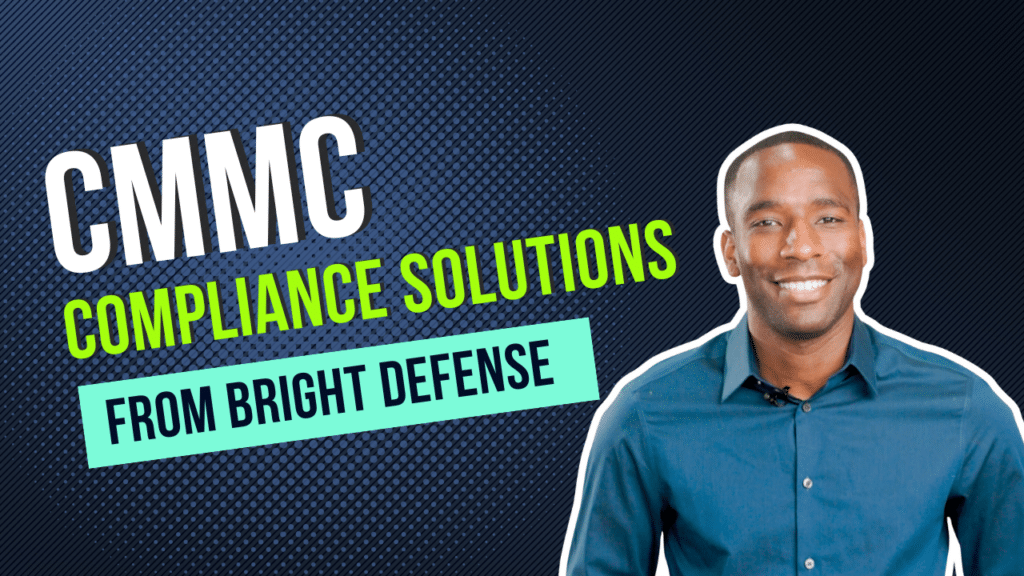
John Minnix
February 16, 2025
SOC 2 Type 1 vs. Type 2 Compliance
Establishing and maintaining customer trust is paramount for organizations across all sectors, particularly those handling sensitive information. This is where SOC 2, a framework developed by the American Institute of Certified Public Accountants (AICPA), comes into play. It offers a comprehensive guideline for data protection.
Organizations looking to demonstrate their commitment to data security often decide between SOC 2 Type 1 and Type 2 certifications. Each type addresses different aspects of data security and operational integrity, providing varying levels of assurance to customers and stakeholders about an organization’s data management practices. This article explores the distinctions between SOC 2 Type 1 vs. Type 2 certifications. We will guide you in choosing the most suitable compliance path for your organization.
Let’s get started!
What is SOC 2 Certification?
Developed by the American Institute of Certified Public Accountants (AICPA), SOC 2 is specifically designed for service providers storing customer data. It ensures their practices align with high standards for security, availability, processing integrity, confidentiality, and privacy. It is a voluntary compliance standard. Organizations pursue SOC 2 certification to demonstrate their commitment to security and gain a competitive advantage.
The Trust Services Criteria (TSC)
At the heart of SOC 2 certification are the Trust Services Criteria, which provide the foundational principles for the certification:
- Security: The protection of system resources against unauthorized access. Security controls help safeguard data from theft, leaks, and unauthorized changes.
- Availability: The accessibility of the company’s systems, products, or services as stipulated by a contract or service level agreement (SLA). This criterion does not solely focus on system functionality but ensures that operations run smoothly and reliably.
- Processing Integrity: The assurance that system processing is complete, valid, accurate, timely, and authorized. This criterion emphasizes the importance of delivering the correct data at the right time and in the right manner.
- Confidentiality: The protection of information designated as confidential from being disclosed to unauthorized parties. Confidentiality controls are crucial for sensitive information such as business plans, intellectual property, and internal company communications.
- Privacy: The management of personal information in accordance with the organization’s privacy notice and principles consistent with the AICPA’s generally accepted privacy principles. Privacy involves organizations focusing on the personal data they collect, use, retain, disclose, and dispose of.
Many organizations pursue only the first three controls, as confidentiality and privacy are relevant only in certain use cases.
SOC 2 Reports
Organizations undergoing a SOC 2 audit can receive two types of reports:
- SOC 2 Type 1 report evaluates the suitability of the design of controls at a specific point in time.
- SOC 2 Type 2 report assesses the operational effectiveness of these controls over a specified period, typically no less than six months.
These reports are extensive documents detailing the audit’s scope, the auditor’s findings, and an opinion on the effectiveness of the controls in place. They serve as a testament to the organization’s dedication to maintaining high security and data protection standards.
SOC 2 Type 1 Certification
SOC 2 Type 1 serves as a snapshot, evaluating the design of an organization’s controls at a specific time. This certification benefits organizations that wish to demonstrate their commitment to security standards early in their compliance journey.
The Process of Obtaining SOC 2 Type 1 Certification
The path to obtaining SOC 2 Type 1 certification involves a meticulous preparation phase. Companies identify the relevant TSC and design controls to meet those criteria. Following this, an auditor assesses whether the controls are suitably designed to achieve the intended objectives. The resulting report provides insights into the controls’ effectiveness during the audit, offering valuable feedback for organizations looking to enhance their security posture.
Benefits of SOC 2 Type 1 Certification
For businesses, SOC 2 Type 1 certification can be a significant step towards establishing trust with stakeholders. It demonstrates a proactive approach to data security, showcasing a commitment to maintaining high information protection standards. Since the audit report is based on a point in time, one can attain a SOC 2 Type 1 certification more quickly.
SOC 2 Type 2 Certification
Building on the foundation of Type 1, SOC 2 Type 2 certification assesses the operational effectiveness of an organization’s controls over six months or longer. This long-term evaluation provides a more comprehensive view of how effectively a company maintains its security and compliance protocols.
The Process of Obtaining SOC 2 Type 2 Certification
The journey to SOC 2 Type 2 certification is more demanding. It requires organizations to design, effectively implement, and maintain their controls over time. The audit process for Type 2 is more extensive. Examining the operational effectiveness of these controls and providing a detailed report that offers a deeper insight into the company’s security practices.
Benefits of SOC 2 Type 2 Certification
Achieving SOC 2 Type 2 certification signifies a mature information security and compliance posture. It reassures clients and partners of the organization’s dedication to upholding high standards over time, making it an invaluable asset for building long-term business relationships. When comparing a SOC 2 Type 1 vs. Type 2 report, the Type 2 is often given greater weight by customers and investors.

Key Differences Between SOC 2 Type 1 and Type 2
Understanding the nuanced differences between Type 1 and Type 2 is pivotal for organizations aiming to reinforce their security posture and compliance credentials. Although both types adhere to the Trust Services Criteria, their scope, depth, and implications for businesses diverge significantly.
Scope and Timing
- SOC 2 Type 1 is akin to a photograph capturing the design of an organization’s controls at a specific moment. This snapshot evaluates if the controls are appropriately designed to meet the relevant Trust Services Criteria at the time of the audit. It’s ideal for organizations seeking to demonstrate their commitment to security practices quickly. It is also good for those in the early stages of implementing their information security programs.
- SOC 2 Type 2, by contrast, is more like a documentary. It offers a dynamic, ongoing view of how effectively an organization implements and maintains its controls over a designated review period, typically six months or more. This type provides a more comprehensive analysis of an organization’s operational effectiveness and commitment to sustained security and compliance practices.
Depth of Evaluation
- Type 1 focuses on the suitability and adequacy of the control design and evaluates whether the controls have been correctly configured to mitigate risks associated with the Trust Services Criteria.
- Type 2 delves deeper, examining the operational effectiveness of these controls. It examines whether the controls are suitably designed and function effectively over time. It provides a robust measure of the organization’s adherence to its security and privacy commitments.
Reporting and Assurance
- The Type 1 report offers assurance to stakeholders that the company’s security controls are appropriately designed.
- The Type 2 report goes further. It gives stakeholders confidence that the company’s controls are well-designed and operational and effectively manage risk over an extended period.

Choosing Between SOC 2 Type 1 and Type 2
Deciding which SOC 2 certification to pursue involves a strategic evaluation of where an organization currently stands and where it aims to be regarding its compliance and security journey. Both certifications serve different purposes and cater to varied organizational needs and stages in the compliance lifecycle.
Organizational Maturity
- For organizations at the beginning of their compliance journey or looking to establish a baseline for their security practices, SOC 2 Type 1 offers a starting point. It allows companies to validate the design of their controls without the need to demonstrate long-term operational effectiveness.
- For those with established security practices seeking to provide a higher level of assurance to stakeholders, SOC 2 Type 2 is the next step. It requires a history of maintaining and operating controls effectively, showcasing a mature posture in information security management.
Customer Requirements and Market Expectations
- In industries or markets where initial trust and quick validation are necessary, a Type 1 certification can be sufficient to meet expectations.
- In highly competitive or regulated industries, or when customers demand a higher level of assurance, Type 2certification becomes crucial. It demonstrates compliance with industry standards and a long-term, consistent commitment to security and privacy.
Strategic Goals and Business Objectives
- Companies aiming for rapid market entry or those developing or refining their information security controls may opt for Type 1 as a strategic milestone.
- Organizations with a strategic objective of building long-term customer trust, aiming for leadership in security practices, or operating in environments with stringent regulatory requirements will find Type 2 certification aligns with their goals.
In summary, while SOC 2 Type 1 certification provides a foundational layer of trust and assurance regarding the design of an organization’s controls, SOC 2 Type 2 certification offers a more in-depth, comprehensive view of the effectiveness of those controls over time. The choice between the two should align with an organization’s maturity, customer requirements, and strategic objectives.
Conclusion
The journey towards SOC 2 certification is a testament to an organization’s commitment to security and compliance. Whether opting for Type 1 or Type 2, the certification process is a strategic endeavor that enhances trust and safeguards customer data. By understanding the nuances between SOC 2 Type 1 and Type 2, organizations can better navigate their path to compliance.
Bright Defense Delivers SOC 2 Type 1 and Type 2 Compliance Solutions!
Whether you need SOC 2 Type 1 or Type 2, Bright Defense can help. Our continuous compliance service model delivers a robust cybersecurity program to meet SOC 2 standards. Our service includes a compliance automation platform that increases efficiency and decreases the cost of compliance.
Do you need help with frameworks addition to SOC 2? Our team of CISSP and CISA-certified security experts can assist with other frameworks, including HIPAA, ISO 27001, CMMC, and PCI.
Start your compliance journey today with Bright Defense!

SOC 2 Type 1 vs. Type 2 Compliance FAQ
What is a service organization, and why is SOC 2 important for them?
A service organization is a company that provides services to other entities, often involving the handling and processing of sensitive customer data. SOC 2 is important for service organizations because it provides a framework for establishing and assessing internal controls related to data security, privacy, and confidentiality. Achieving SOC 2 compliance demonstrates to customers the service provider’s commitment to protecting sensitive data.
How does SOC 2 assess the operating effectiveness of a service organization’s controls?
SOC 2 assesses the operating effectiveness of a service organization’s controls through a thorough examination over a specified audit period. This involves evaluating whether the control systems are properly designed, implemented, and maintained to ensure data security and privacy. The audit report provides an objective assessment of the effectiveness of these controls.
What are the types of internal controls relevant to SOC 2 for service organizations?
Internal controls relevant to SOC 2 include those related to data processing, access controls, data security, reporting controls, and the protection of sensitive customer data. These controls are designed to ensure that service organizations manage and protect data in accordance with the trust principles of security, availability, processing integrity, confidentiality, and privacy.
How can SOC 2 certification help service organizations beyond financial reporting?
Beyond financial reporting, SOC 2 certification helps service organizations demonstrate their commitment to high standards of data security and privacy. It enables them to assure customers and potential customers of their dedication to protecting sensitive data, thereby enhancing trust and supporting business growth.
What should a service provider do to prepare for a SOC 2 audit?
A service provider preparing for a SOC 2 audit should conduct a thorough review of its control systems and internal controls, ensuring they align with the SOC 2 trust principles. This involves documenting policies and procedures, implementing and maintaining effective controls, and conducting an internal review to provide sufficient evidence of compliance. Engaging with a reputable auditor early in the process is also critical for a successful audit outcome.
How does a SOC 2 audit report describe the scope and effectiveness of controls?
A SOC 2 audit report describes the audit scope by detailing the specific areas and functions examined, including the control systems and internal controls relevant to the trust principles. It assesses the effectiveness of these controls over the audit period, providing a detailed analysis of whether the service organization’s practices adequately protect sensitive data and ensure data security.
What distinguishes the audit period in SOC 2 Type 1 from Type 2 reports?
The audit period for SOC 2 Type 1 is a specific point in time, focusing on the design of controls to ensure they are suitably configured to meet the trust principles. For SOC 2 Type 2, the audit covers a longer period, typically at least six months, providing a more thorough examination of the operating effectiveness of the service organization’s controls over time.
How can service companies assure customers of their data security practices through SOC 2?
Service companies can assure customers of their data security practices by obtaining a SOC 2 report, which serves as an objective assessment of their compliance with the trust principles. This report demonstrates to user entities and potential customers that the service provider has implemented robust control systems and internal controls to protect sensitive data.
What role do access controls play in achieving SOC 2 compliance?
Access controls are critical in achieving SOC 2 compliance as they help protect sensitive customer data from unauthorized access and breaches. These controls ensure that only authorized personnel can access and handle data, thereby safeguarding the privacy and security of the information processed by the service organization.
Why is a longer period important for assessing the effectiveness of controls in SOC 2 Type 2 reports?
A longer period is important for assessing the effectiveness of controls in SOC 2 Type 2 reports because it allows for a more comprehensive evaluation of how well the service organization maintains its control systems over time. This ensures that the controls are not only well-designed but also consistently applied and effective in protecting data security and privacy throughout the audit period.
What is the main difference between SOC 1 and SOC 2 reports?
The main difference between SOC 1 and SOC 2 reports lies in their focus and purpose. SOC 1 reports assess the internal controls over financial reporting for service organizations that handle financial transactions or reporting for their clients. In contrast, SOC 2 reports evaluate the effectiveness of a service organization’s controls related to security, availability, processing integrity, confidentiality, and privacy of customer data, irrespective of whether those activities impact financial reporting.
Who needs a SOC 1 report, and who needs a SOC 2 report?
SOC 1 reports are necessary for service organizations whose services affect their clients’ financial reporting, such as payroll processing or data center hosting services for financial applications.
SOC 2 reports target service organizations that manage or store customer information that requires protection. These include cloud service providers, SaaS companies, and other technology and cloud computing-based services.
Get In Touch



